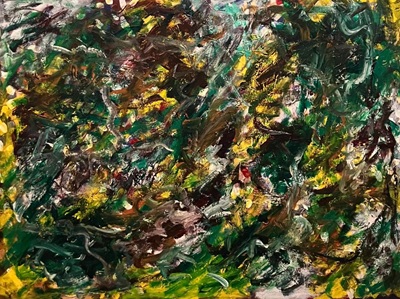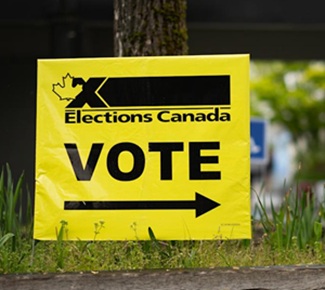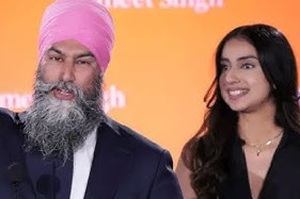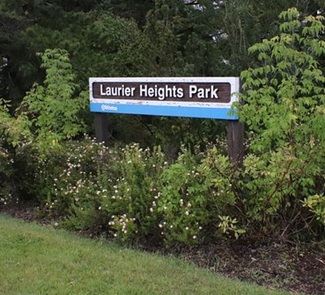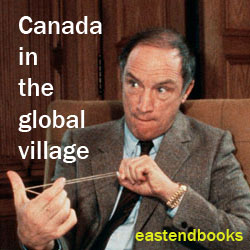Early examination of entrails of 2025 Canadian federal election : New Democrats reduced to mere 7 seats but that + 169 Liberals gives a 176-seat majority in parliament!
Apr 30th, 2025 | By Randall White | Category: In BriefRANDALL WHITE, FERNWOOD PARK, TORONTO. WEDNESDAY, APRIL 30, 2025. The more or less final results of the 2025 Canadian federal election were still not fully known with certainty, even as we approached dinner on the day after election day.
It has nonetheless been clear since late on election day (Monday, April 28) that Liberal leader Mark Carney will at least be prime minister (and form a government), as leader of the party with the largest number of seats in the Canadian House of Commons.
What remained not altogether clear until possibly late in the evening of the day after the election was exactly how many seats each party will have — and whether the Carney Liberals with the largest number of seats will also have a working majority of seats in the House (and can thus rest secure in parliament until the next fixed date election in the fall of 2029).
(1) A short-lived Carney minority government ??
Now on the second day after the 2025 election it finally seems clear enough that the Liberals will not quite manage to win the 172 seats that constitute a bare majority in the House. The basic “preliminary results” as reported by Elections Canada, as of 9:04 PM, April 29, 2025 (with 99.9% of all polls reporting) are :
LIB 169 seats, 43.7% vote
CON 144 seats, 41.3% vote
BQ 22 seats, 6.3% vote
NDP 7 seats, 6.3% vote
Other 1 seat, 2.4% vote
Total 343 seats, 100.0% vote.On similar preliminary numbers, 19,597,674 of 28,525,638 registered electors or 68.7 % actually turned out to vote in 2025. This is considerably above the historic low voter turnout in a Canadian federal election of 58.8% in 2008, but also considerably below the highest turnout of 79.4% in 1958. (And turnout in the four elections immediately preceding 2025 was 61.1% in 2011, 68.3% in 2015, 67.0% in 2019, and 62.6% in 2021.)
In 2025 results were so close in several of the 343 local “ridings” accounted for in the above table (officially “electoral districts” nowadays) that there will be automatic recounts in some cases. Apparently this could change the above numbers somewhat. Again, however, the current smart money seems convinced that none of this will be enough to give the Carney Liberals a majority in parliament, all by themselves.
This could mean that the new Carney Liberal minority government will not last much longer than the widely accepted 18-month average for Canadian minority governments. And we Canadian voters could be going to the federal polls again around the same time as the USA mid-terms in the fall of 2026 — or even sooner.
(2) Or getting along with a little help from New Democrats, Green Party, Bloc Québécois, and even the Conservative Party of Canada ??
On the other hand, at their current preliminary result of 169 seats, the Liberals are only 3 seats short of a bare 172-seat majority in the House. Add the 7 remaining New Democrat seats and you do in fact have what could be a workable enough parliamentary majority of 176 seats (and even 177seats if Elizabeth May’s one Green vote is often enough added to the majority).
An arrangement of this sort with Jagmeet Singh’s New Democrats did help the minority Justin Trudeau Liberals elected in 2021 survive in parliament until early 2025.
Meanwhile, Bloc Québécois leader Yves-François Blanchet believes (not altogether unlike President Trump?) that Canada is an artificial country. Yet in the immediate wake of the 2025 election he has also been quick to stress that as leader of the remaining 22 BQ federal MP s from Quebec he looks forward to working with the now duly elected Prime Minister Carney, on the urgent task immediately at hand for all Canadians : Trying to do something constructive about Canada’s now quite damaged trading relationship with the United States.
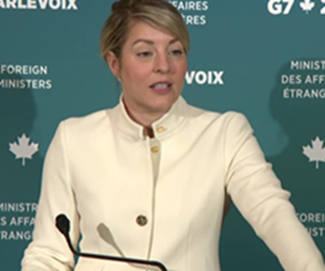
Ideally, Mr. Carney seems to be suggesting, in concert with Mexico. But if the current US administration won’t move on that kind of trilateral front … whatever … though of course Canada will be working hard as well to build its cross-Canada domestic market, and promote new Canadian international economic ties with Europe, Asia, Africa, and Latin America.
That all has a mid to long-term tilt. Meanwhile again, US tariffs are immediate threats to some Canadian jobs, and some public action has to happen in the short run too.
Even Conservative leader Pierre Poilievre has reached out to the prospect of wider support for Canadian interests (of the sort that might be expected from a 1945 founding member of the United Nations organization, currently headquartered in New York, NY, USA), in the midst of Donald Trump’s trade war against Canada.
(3) In Canada’s “Westminster|” parliamentary democracy leaders can lose their seats with some class
In one (or two) of many twists and turns in the 2025 Canadian federal election both Jagmeet Singh and Pierre Poilievre lost their seats — in Burnaby Central in BC (Singh) and Carleton in the Ottawa region exurbs (Poilievre).
Singh announced that he would resign as NDP leader once a replacement has been found, in a somewhat emotional but also generous, human, lean, moving, and admirably brief talk, side by side with his smiling, frequently applauding, and quite charming wife, Gurkiran Kaur Sidhu. They both seemed pleased by the prospect of a life without quite so much progressive politics immediately ahead. And for my money it’s not remotely Singh’s fault that so many of his voters rushed into the arms of Mark Carney’s Liberals, in what so many said was a crucial election.
Poilievre (side by side with his smiling wife, Anaida Poilievre née Galindo — “a refugee from Venezuela”) has made clear enough that he intends to stay on as Conservative leader. No less an authority on such matters than former Alberta premier and before that Stephen Harper cabinet minister Jason Kenney has urged on TV that this is a good thing.
Pierre Poilievre has finally led a Conservative Party that has done better than many expected, with 144 seats and more than 41% of the popular vote. And he has finally made clear enough that, whatever else, the Conservative Party of Canada is not really some carbon copy of Donald Trump’s Republican Party in the USA. In yet another of the many ways in which, however artificial it may or may not be, Canada really is a different country from the United States.
(4) Canadian Conservatism and the Canadian Liberalism led by the Mark Carney who grew up in Alberta
Finally, for some ultimate demonstration that, whatever else, the Conservative Party of Canada in 2025 is not really like the Trumpist Republican Party of the USA in 2025, see former Conservative Prime Minister of Canada Stephen Harper’s Tweet/Xpost offering “my sincere congratulations to Prime Minister Carney on the results his party achieved …
“I wish him, and the government he will lead, success as they navigate our country forward during these challenging times. I also want to congratulate Pierre Poilievre and the Conservative Party of Canada on making significant gains, both in seats and popular vote, and bringing an entire new generation of Canadians to the Conservative Party …
“To all candidates, campaign volunteers and election workers who participated in this election: thank you for your contribution to our democratic process, one that so many brave Canadians have sacrificed so much to defend. Their legacy is the proud and independent country we must always serve and protect. The True North, Strong and Free.”
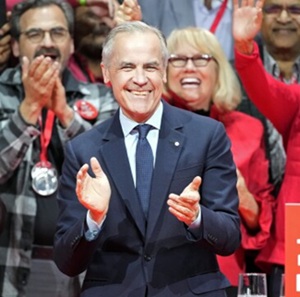
In the end I suspect Stephen Harper quietly believes (as I do myself, along with many others) that former Bank of Canada and then Bank of England Governor Mark Carney — born in the Canadian Northwest Territories, raised in the Laurier Heights suburb of Edmonton, Alberta, and educated at Harvard and Oxford — is exactly the right federal leader for Canada right now.
And maybe this 2025 election — with even Mr. Poilievre raising at least some prospect of broad multi-party co-operation — has finally given Mr. Carney the beginnings of a real and deep cross-Canada (and multi-partisan) political base, more than equal to the task of outliving the absurdity of Donald Trump II’s late 19th century Old-School American Imperialist Revival, 2025–2028.
(Oh and btw, see the Washington Post for “After Canada, the anti-Trump backlash moves to Australia”. Our Commonwealth brethren down under will be voting to keep the Australian Labor Party friend of Canadian Liberalism — and the Canadian New Democratic Party — in office [maybe?] this coming Saturday, May 3.)
